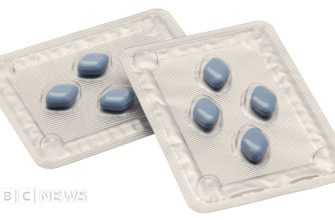Think you’re stuck with that stubborn nail fungus? Think again. Lamisil 250mg tablets offer a powerful, prescription-strength solution to help you reclaim healthy, clear nails. But before you rush to your doctor, let’s unpack what Lamisil is, how it works, and what to expect during your treatment. We’ll break down the science behind this antifungal medication and explore practical tips for maximizing its impact.
Lamisil contains terbinafine, an antifungal agent that specifically targets dermatophytes – the fungi responsible for most nail infections. Unlike topical treatments that struggle to penetrate the nail plate, terbinafine works from the inside out. This means it gets directly to the source of the infection, inhibiting the fungus’s ability to grow and spread. Imagine it as a targeted strike against the root cause of the problem, offering a more complete and lasting solution.
A typical course of Lamisil lasts 6 weeks for fingernail infections and 12 weeks for toenail infections. While you won’t see immediate results – healthy nails take time to grow – persistence is key. We’ll explore ways to track your progress and recognize the signs that Lamisil is doing its job. Plus, we’ll cover potential side effects and how to manage them, ensuring a smoother, more comfortable treatment experience.
- Lamisil 250mg Tablets: Your Guide to Understanding and Use
- Potential Side Effects
- Drug Interactions
- What is Lamisil?
- How Lamisil Works
- Using Lamisil Correctly
- Possible Side Effects
- Rare, but Serious Reactions
- Who Should Avoid Lamisil?
- Pregnancy and Breastfeeding
- Other Medical Conditions
- Storing Lamisil Safely
- Checking for Expiration
- Traveling with Lamisil
Lamisil 250mg Tablets: Your Guide to Understanding and Use
Take Lamisil 250mg tablets exactly as your doctor prescribes to treat fungal infections. Typically, you’ll swallow one tablet daily, with or without food. Consistency is key, so try to take it at the same time each day. This helps maintain a steady level of medication in your body.
Treatment duration varies depending on the type and severity of your infection. For toenail infections, you might need to take Lamisil for 12 weeks, while fingernail infections usually require 6 weeks. Skin infections may only need a few weeks of treatment. Your doctor will determine the correct length for your specific situation.
Potential Side Effects
Be aware of possible side effects. Some common ones include headaches, stomach upset, and skin rashes. If you experience any unusual or severe reactions, contact your doctor immediately. Liver problems, although rare, are serious. Watch for symptoms like persistent nausea, vomiting, fatigue, dark urine, or jaundice (yellowing of the skin or eyes). Report these immediately.
Drug Interactions
Tell your doctor about all medications, vitamins, and supplements you’re taking. Lamisil can interact with certain drugs, affecting how they work or increasing the risk of side effects. Pay close attention if you take medications for blood pressure, heart conditions, or depression, as interactions are more probable.
If you miss a dose, take it as soon as you remember. However, if it’s almost time for your next scheduled dose, skip the missed one and continue with your regular dosing schedule. Don’t double up on doses to make up for the missed one.
What is Lamisil?
Lamisil tablets contain Terbinafine, an antifungal medicine. You use Lamisil to treat fungal infections of the nails (onychomycosis) and skin, such as athlete’s foot, jock itch, and ringworm. This medication halts fungal growth, allowing your body to eliminate the infection.
You take Lamisil orally, usually once daily. The specific dosage and duration depend on the type and severity of your infection. Always follow your doctor’s instructions carefully.
How Lamisil Works
Terbinafine disrupts the production of ergosterol, a vital component of the fungal cell membrane. This disruption weakens the cell membrane, ultimately killing the fungus or inhibiting its growth. This targeted approach limits the impact on your own healthy cells.
Before you begin taking Lamisil, inform your doctor about any existing medical conditions or medications you’re currently taking. This includes liver or kidney problems, as these conditions may require dosage adjustments. You also need to disclose allergies or other sensitivities. Be patient; full treatment for nail infections often requires several months due to the slow growth of nails.
Using Lamisil Correctly
Take one 250mg Lamisil tablet once daily, exactly as your doctor directs. Swallow the tablet whole with a glass of water. You can take it with or without food.
Consistency is key! Taking Lamisil at the same time each day helps maintain a steady level of the medication in your system. Set a daily reminder if it helps you remember.
Don’t stop taking Lamisil before the prescribed treatment duration is complete, even if your symptoms seem to improve. Prematurely stopping could lead to the infection returning.
- For toenail infections, treatment typically lasts 12 weeks.
- Fingernail infections generally require about 6 weeks of treatment.
If you miss a dose, take it as soon as you recall. However, if it’s almost time for your next scheduled dose, skip the missed dose and continue with your regular dosing schedule. Avoid doubling doses to compensate for a missed one.
During treatment, inform your doctor if you experience any unusual symptoms, especially persistent nausea, vomiting, abdominal pain, or jaundice (yellowing of the skin or eyes). These could indicate a liver problem.
Keep all appointments with your doctor for regular check-ups and liver function tests while taking Lamisil. These tests help monitor your body’s response to the medication.
Store Lamisil tablets at room temperature, away from moisture and heat. Do not store in the bathroom. Keep out of the reach of children.
Avoid excessive alcohol consumption while taking Lamisil, as it can increase the risk of liver problems.
Inform your doctor about all other medications you are taking, including over-the-counter drugs and herbal supplements, as some medications can interact with Lamisil.
Possible Side Effects
You might experience some side effects while taking Lamisil 250mg tablets. Pay attention to your body and report any unusual symptoms to your doctor. Common side effects include headache, digestive issues (like nausea, abdominal pain, or diarrhea), skin rashes, and taste disturbances. If you find your sense of taste changing, or losing it altogether, tell your doctor immediately – it usually returns after stopping the medication, but quick action is better.
Rare, but Serious Reactions
Although less common, more serious side effects can occur. Liver problems are a possibility, so watch for symptoms such as persistent nausea, vomiting, dark urine, pale stools, or yellowing of the skin or eyes (jaundice). If you notice these, seek medical attention without delay. Rarely, Lamisil can affect your blood cells, potentially leading to an increased risk of infections or bleeding. Unexplained bruising, fever, or sore throat could signal a problem.
Skin reactions, beyond mild rashes, also warrant prompt medical evaluation. Blistering, peeling skin, or severe itching may indicate a serious allergic reaction, like Stevens-Johnson syndrome. Be vigilant about any new or worsening skin symptoms.
Remember to read the patient information leaflet included with your medication for a complete list of potential side effects. When in doubt, always consult your doctor or pharmacist.
Who Should Avoid Lamisil?
You should avoid Lamisil if you’ve had an allergic reaction to terbinafine or any of the inactive ingredients in the tablet before. An allergic reaction might include a rash, hives, difficulty breathing, or swelling of your face, lips, tongue, or throat. Discuss any past allergic reactions to medications with your doctor before taking Lamisil.
If you have liver problems, Lamisil may not be the right treatment option for you. This is because Lamisil is processed by the liver, and taking it with a compromised liver could lead to further damage. Your doctor will likely order blood tests to assess your liver function before you begin taking the medication.
Individuals with kidney problems also need to exercise caution. Because Lamisil is eliminated from the body through the kidneys, reduced kidney function can cause the drug to build up to unsafe levels. Your doctor may adjust the dosage or recommend a different medication.
Speak with your doctor if you are taking other medications. Certain drugs can interact with Lamisil, altering how it works or increasing the risk of side effects. Be sure to disclose all prescription medications, over-the-counter drugs, and herbal supplements you are currently taking.
Pregnancy and Breastfeeding
The safety of Lamisil during pregnancy hasn’t been fully established. If you are pregnant, plan to become pregnant, or are breastfeeding, speak with your doctor about the potential risks and benefits of using Lamisil. They can help you weigh your options and make an informed decision.
Other Medical Conditions
Inform your doctor if you have lupus or psoriasis before starting Lamisil. These conditions may be aggravated by the medication. Careful monitoring is necessary.
Always disclose your complete medical history to your doctor. This allows them to assess your individual risk factors and determine if Lamisil is a safe and appropriate treatment for you. Open communication is crucial to avoid potential complications.
Storing Lamisil Safely
Keep Lamisil 250mg tablets in their original packaging at room temperature, ideally between 15°C and 30°C (59°F and 86°F). This protects them from moisture and light, which can degrade the medication’s potency. Avoid storing them in bathrooms or near sinks where humidity levels are high.
Ensure the medication is out of reach of children and pets. Consider a locked medicine cabinet or high shelf for added safety.
Checking for Expiration
Always check the expiration date printed on the packaging. Do not use Lamisil tablets past this date, as the medication’s effectiveness may be reduced. Dispose of expired or unused tablets properly; check with your local pharmacy or waste disposal company for guidance on appropriate disposal methods. Do not flush them down the toilet or pour them down the drain.
Traveling with Lamisil
When traveling with Lamisil, keep it in your carry-on luggage rather than checked baggage to avoid temperature extremes. Also, keep the original prescription or a copy with you, just in case you need to replace the medication or show it to airport security. Store the tablets at room temperature in transit.
Here’s a simple guide to acceptable storage conditions:
| Environment | Acceptable? | Reason |
|---|---|---|
| Bathroom | No | High humidity degrades medication. |
| Kitchen near stove | No | Heat can affect potency. |
| Locked medicine cabinet | Yes | Dry, dark, and secure. |
| Car glove compartment (during summer) | No | High temperatures can degrade medication. |
| Carry-on luggage (airplane) | Yes | Temperature controlled, allows easy access. |






